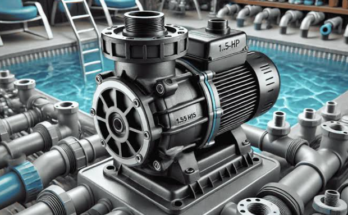Continued Exploration of the Star HR264: Its Impact on Manufacturing and Industries
The Star HR264 is truly a masterpiece of modern manufacturing technology, enabling industries to push the boundaries of precision engineering. As businesses continue to demand higher-quality products with faster turnaround times, the tool remains an essential tool. In this section, we will delve deeper into its technical aspects, applications across different sectors, and the future potential of this impressive machine.
Precision Manufacturing: The Core Strength of the Star HR264
In the world of precision manufacturing, no component can afford to be just good enough. This is where the Star HR264 stands out. Whether creating intricate aerospace parts or producing complex medical devices, the machine’s precision ensures that every piece meets the exacting standards required.
The Role of the CNC Control System
The Star HR264 comes equipped with an advanced CNC (Computer Numerical Control) system, which allows operators to program and control the machine down to the smallest detail. This ensures that the machining process is not only fast but also incredibly accurate. With CNC capabilities, companies can achieve tighter tolerances and replicate designs consistently across a wide range of parts. This level of control is especially important in industries like aerospace and medical, where even the smallest error can have serious consequences.
Multi-Axis Movement for Complex Designs
What sets the tool apart from other machinery is its multi-axis capabilities, which allow it to handle complex tasks with ease. Traditional machines typically operate along one or two axes, limiting their versatility. In contrast, the tool can move in multiple directions, ensuring the creation of geometrically intricate parts in a single setup. This reduces the need for multiple machines, saving both time and costs.
Key Industries Benefiting from the Star HR264
As we have touched upon, the tool serves multiple industries, each with its unique requirements and challenges. Let’s take a more detailed look at how this machine meets the needs of some of the most demanding sectors in the world.
Automotive Industry: Driving Precision Forward
The automotive industry has long relied on precision machinery to produce components like engine parts, suspension systems, and fuel systems. The Star HR264 excels in this domain, where high tolerances and quality control are essential to ensure that vehicles perform safely and efficiently.
For example, when producing high-performance parts such as cylinder heads, transmission gears, or brake calipers, manufacturers need a machine that can handle both intricate shapes and high-volume production. The tool can easily take on this challenge, offering the speed and precision necessary for the automotive industry. Its versatility also allows manufacturers to quickly adapt the machine for various projects, ensuring minimal downtime and maximum productivity.
Medical Sector: Where Accuracy Saves Lives
Precision in the medical sector is paramount. Whether manufacturing prosthetics, surgical instruments, or diagnostic equipment, every part must meet extremely high standards. The tool is up to the task, ensuring that every piece manufactured for the medical field adheres to stringent regulations and quality controls.
For instance, the production of custom implants requires the utmost precision to ensure they fit patients’ specific anatomical needs. The Star HR264’s ability to produce complex, high-precision parts in materials like titanium, stainless steel, and specialized polymers makes it an invaluable tool in the medical industry. Additionally, the ability to produce components with minimal waste contributes to sustainability goals, further enhancing the value of this machine for medical manufacturers.
Aerospace Industry: Engineering the Future of Flight
The aerospace industry demands incredibly high levels of precision and quality control. Components like turbine blades, landing gear, and structural parts must not only meet strict design requirements but must also withstand extreme conditions, including high temperatures and high stress.
The tool plays an essential role in the manufacturing of these critical components..
Electronics: Shrinking Technology with Increasing Precision
The electronics industry is constantly evolving, with consumers demanding smaller, more powerful devices. This has placed significant pressure on manufacturers to produce tiny, high-quality components at rapid speeds. The tool fits this need perfectly, thanks to its ability to manufacture microcomponents used in circuit boards, connectors, and connectors for mobile phones, laptops, and other devices.
One of the major advantages of the tool in electronics manufacturing is its capability to maintain precision at a very small scale. The machine can produce miniature parts that fit together seamlessly, even when dealing with materials like silicon and specialized metals. In this fast-paced industry, manufacturers rely on the machine’s high-speed capabilities to meet the demand for rapid production cycles.
Environmental Sustainability in Manufacturing
As environmental concerns become increasingly important in the manufacturing world, it is crucial for companies to consider the sustainability of their operations. The tool stands out as an eco-friendly option for manufacturers, contributing to sustainability goals in several ways:
Reducing Material Waste
One of the biggest contributors to environmental waste in manufacturing is the scrap material produced during the machining process. The tool minimizes waste by optimizing cutting paths and ensuring that material is used efficiently. By reducing material waste, businesses can lower their environmental impact and reduce costs associated with raw material procurement.
Energy Efficiency
Energy efficiency is another key factor in reducing a company’s carbon footprint. The tool is designed to be energy efficient, ensuring that it operates with minimal power consumption while maintaining high productivity levels. This makes it an excellent choice for businesses that are looking to make their operations more sustainable without sacrificing performance.
Extended Machine Life
The tool is built to last, with high-quality components and engineering that ensure longevity. By reducing the need for frequent repairs or replacements, businesses can extend the life of the machine and reduce their overall environmental impact. This also makes the machine a cost-effective solution over the long term.
The Future of Star HR264 and Precision Engineering
As industries continue to evolve, the tool is poised to play a key role in shaping the future of manufacturing. Its ability to adapt to different sectors, perform a wide range of tasks, and produce highly precise parts positions it as an invaluable asset for businesses looking to stay ahead of the curve.
Moreover, with ongoing developments in AI and automation, the tool is likely to become even more intelligent and intuitive in the future. With the integration of smart technologies, operators will be able to monitor and control the machine remotely, ensuring even greater efficiency and reducing the likelihood of downtime.
Conclusion:
The Star HR264 stands as a testament to the advancements in precision manufacturing. It combines cutting-edge technology, flexibility, and speed to meet the needs of a variety of industries. Whether you’re in automotive, medical, aerospace, or electronics, this machine has proven itself to be a reliable and essential tool for the modern manufacturer. Its multifaceted capabilities, precision, and versatility ensure that it will continue to be a cornerstone of manufacturing for years to come.
FAQs
What is the key feature of the Star HR264?
The Star excels with its advanced CNC system, multi-axis capabilities, and high-speed production features, ensuring precision and efficiency in manufacturing.
How does the Star HR264 improve production efficiency?
With its ability to perform multiple tasks, including turning, milling, and drilling, in one setup, the tool reduces the need for multiple machines, enhancing efficiency.
What industries benefit most from the Star HR264?
The tool is ideal for industries such as automotive, aerospace, medical, and electronics, where precision and speed are critical.
Can the Star HR264 handle high-precision components?
Yes, the tool is specifically designed to manufacture high-precision parts, including those used in aerospace and medical industries.
Is the Star HR264 customizable for specific needs?
Yes, the tool offers a range of customization options to suit the specific requirements of various manufacturing tasks.
What materials can the Star HR264 work with?
The tool can handle a wide range of materials, including metals, alloys, plastics, and composites.
How does the Star HR264 contribute to sustainability?
The Star HR264 minimizes waste, enhances energy efficiency, and extends the life of components, making it an eco-friendly choice for manufacturers.
What are the future advancements for the Star HR264?
Future advancements in the tool will likely include AI and automation features that improve monitoring, control, and efficiency in production.




